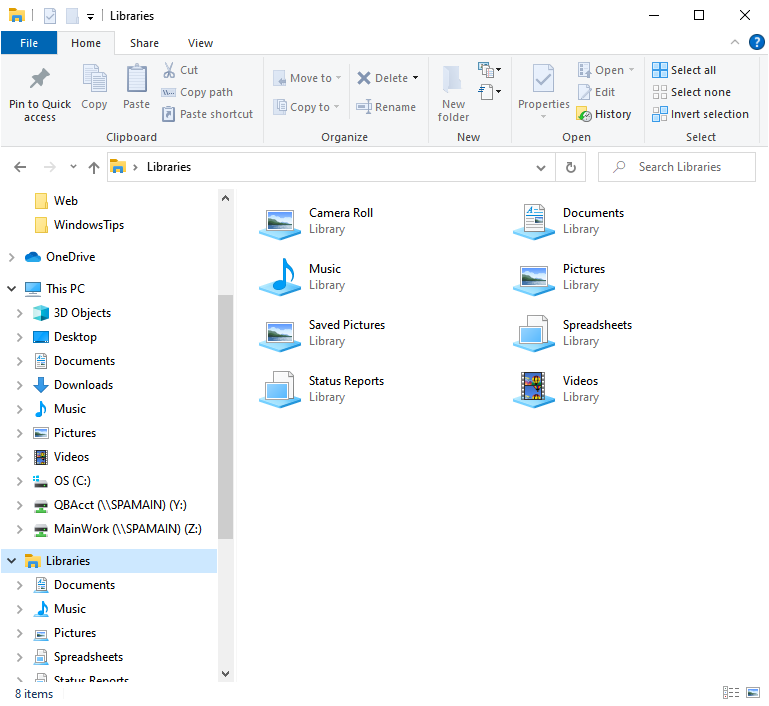Over the course of time, you may find that you're no longer using a library—perhaps you're just content to navigate directly to the folder or you place the folder in Quick Access. You can delete the library quite simply. It's important to note that deleting the library does not delete the folders or files that the library contains. Since a library is essentially a container that points to the original files, deleting the library removes this container but leaves the original files and folders in their existing location. A list of available libraries is shown in the following figure. (See Figure 1.)

Figure 1. Available libraries.
If you want to delete a library, say the Spreadsheets library, it's a simple matter of right-clicking the Spreadsheets library in the left pane and clicking Delete from the Context menu. The library is deleted, but the folders and files to which it pointed still remain intact.
You may be prompted with a confirmation message asking if you're sure you want to delete the library. Clicking "Yes" will cause the library to be deleted; clicking "No" will leave the library intact.
Remember that deleting a library does not delete the files and folders contained within the library. This is because libraries are simply symbolic collections of files and folders.
![]()
![]() This tip (11991) applies to Windows 7 and 10.
This tip (11991) applies to Windows 7 and 10.
The Music folder is one of several system libraries specifically optimized to hold digital music. This tip tells you ...
Discover MoreThe Pictures folder is one of several system libraries created in Windows by default. This library is specifically ...
Discover MoreYou can utilize Explorer's search utility to find text within files. To make searches fast, Windows maintains a search ...
Discover MoreThere are currently no comments for this tip. (Be the first to leave your comment—just use the simple form above!)
Copyright © 2025 Sharon Parq Associates, Inc.
Comments